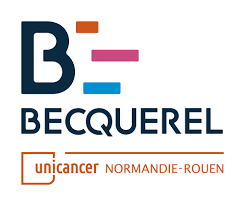Radiation-induced lung injury after breast cancer treatment: incidence in the CANTO-RT cohort and associated clinical and dosimetric risk factors
Résumé
Purpose: Radiation-induced lung injury (RILI) is strongly associated with various clinical conditions and dosimetric parameters. Former studies have led to reducing radiotherapy (RT) doses to the lung and have favored the discontinuation of tamoxifen during RT. However, the monocentric design and variability of dosimetric parameters chosen have limited further improvement. The aim of our study was to assess the incidence of RILI in current practice and to determine clinical and dosimetric risk factors associated with RILI occurrence. Material and methods: Data from 3 out of the 10 top recruiting centers in CANTO-RT, a subset of the CANTO prospective longitudinal cohort (NCT01993498), were retrospectively analyzed for RILI occurrence. This cohort, which recruited invasive cT0-3 cN0-3 M0 breast cancer patients from 2012 to 2018, prospectively recorded the occurrence of adverse events by questionnaires and medical visits at the end of, and up to 60 months after treatment. RILI adverse events were defined in all patients by the association of clinical symptoms and compatible medical imaging. Results: RILI was found in 38/1565 (2.4%) patients. Grade II RILI represented 15/38 events (39%) and grade III or IV 2/38 events (6%). There were no grade V events. The most frequently used technique for treatment was 3D conformational RT (96%). In univariable analyses, we confirmed the association of RILI occurrence with pulmonary medical history, absence of cardiovascular disease medical history, high pT and pN, chemotherapy use, nodal RT. All dosimetric parameters were highly correlated and had close predictive value. In the multivariable analysis adjusted for chemotherapy use and nodal involvement, pulmonary medical history (OR=3.05, p<0.01) and high V30 Gy (OR=1.06, p=0.04) remained statistically significant risk factors for RILI occurrence. V30 Gy >15% was significantly associated with RILI occurrence in a multivariable analysis (OR=3.07, p=0.03). Conclusion: Our study confirms the pulmonary safety of breast 3D RT in CANTO-RT. Further analyses with modern radiation therapy techniques such as IMRT are needed. Our results argue in favor of a dose constraint to the ipsilateral lung using V30 Gy not exceeding 15%, especially in patients presenting pulmonary medical history. Pulmonary disease records should be taken into account for RT planning. Copyright
| Origine | Fichiers éditeurs autorisés sur une archive ouverte |
|---|---|
| licence |


